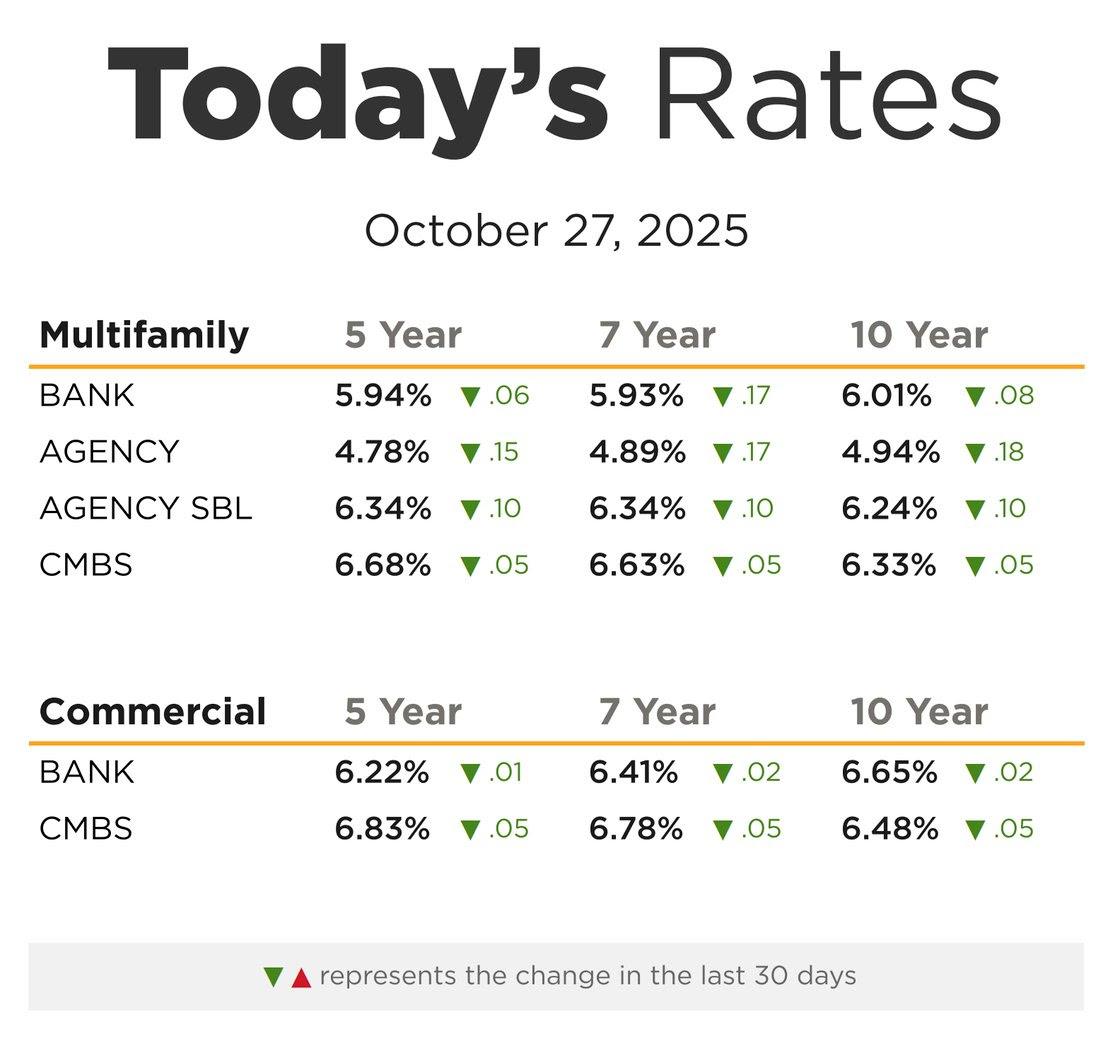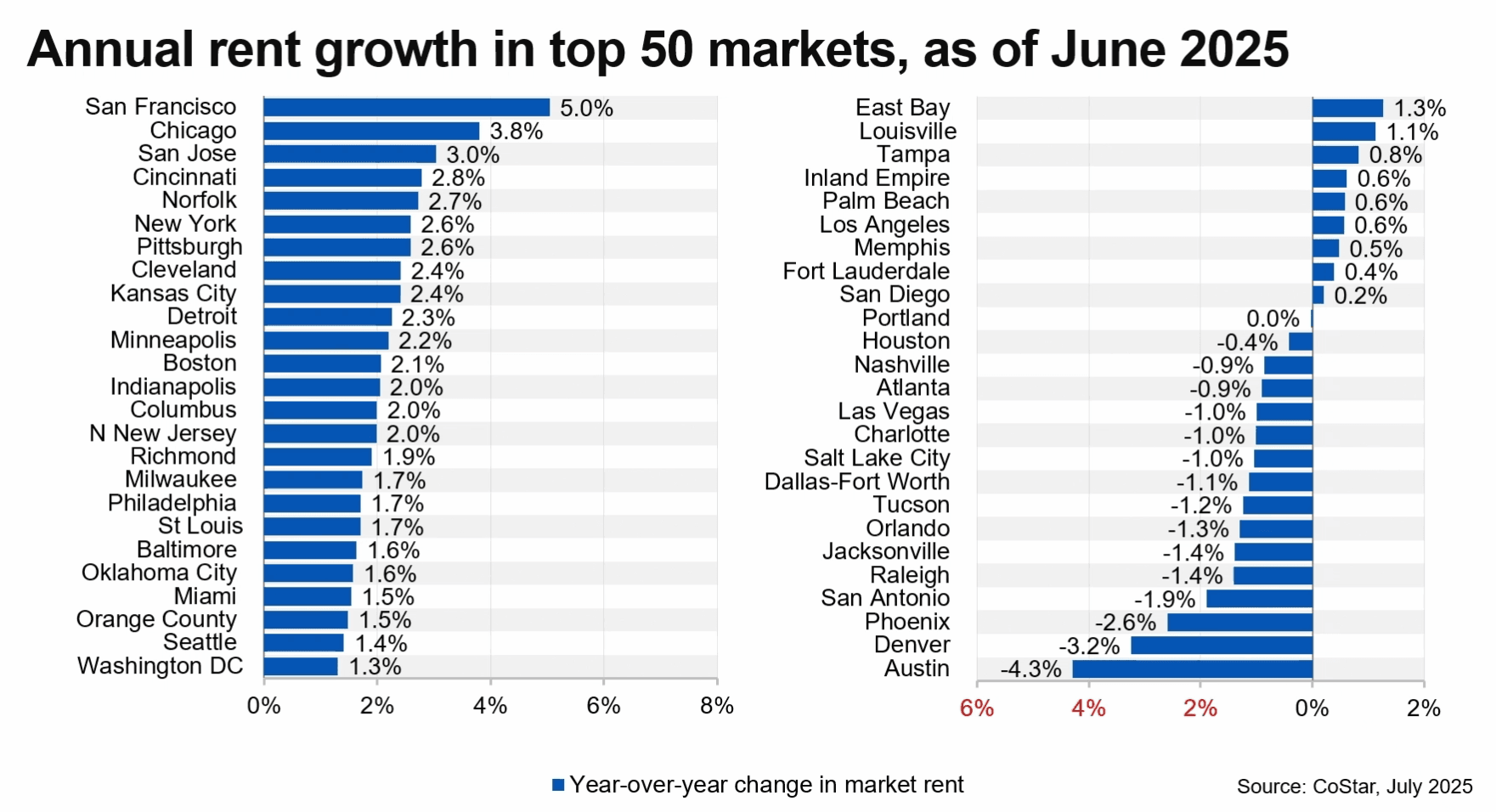The increasing cost of capital and mounting concerns about ex-ante exit cap rates will ultimately drive buyers’ bids lower.
The increasing cost of capital is squeezing multifamily cap rates, which have been on a steady decline throughout the course of the pandemic.
According to a new analysis from Moody’s Analytics, that will ultimately pressure property values in the sector — and “without continued unprecedented rent growth, the darling multifamily asset class likely carries the most risk of value decline while the benchmark US Treasury rate is on the rise,” analysts say.
“Although Q3 has finally started to show a slight increase for industrial, office, and retail, cap rates have remained sticky. For multifamily, cap rates have continued to decline, which, along with tremendous rent growth, has propped up multifamily values compared to equities and other investments,” Moody’s Kevin Fagan and Xiaodi Li write. “But the increasing cost of capital and mounting concerns about ex-ante exit cap rates will ultimately drive buyers’ bids lower and property yields higher for the multifamily sector. So, multifamily property values will face pressure from both the Fed pushing rates and banks following suit with loan interest rates.”
The Moody’s economists note that rising 10-year treasury rates have pushed CMBS loan interest rates much higher than in recent months, and both are predicted to continue to climb. But while industrial’s cap rate started to climb up in Q3 2022, multifamily continued to decline. As of Q3, spreads between cap rates and loan interest rates for the sector clocked in at 0.76% — and Fagan and Li say that “cap rates with tight spreads are highly likely to increase under the upward pressure of rising interest rates.” That begs the question, they say, of how much rent growth is needed to curb a decline in value.
“Assuming the initial cap rate as 5%…if a CRE investor wants to exit in five years and the cap rate rises from 5% to 6.5%, the average annual rent growth needs to be higher than 5.4%,” they say. “Otherwise, the exit value will be lower than the current value. Though annual growth rates were 8.2% for multifamily from Q3 2021 to Q3 2022, a sustained average growth rate of 5.4% is well above any historical precedent.”
Ultimately, the pair say tight cap rate spreads and rising rates are “warning signs.”
“We will keep a close eye on those numbers,” they say.
Source: Rising Cost of Capital Squeezing Multifamily Cap Rates
Receive Market Insights
Periodic analysis on rents, pricing, cap rates, and transaction activity across Chicago and key suburban markets.



